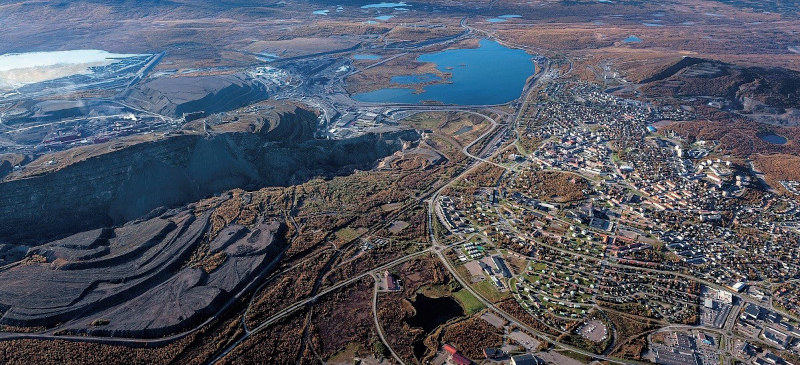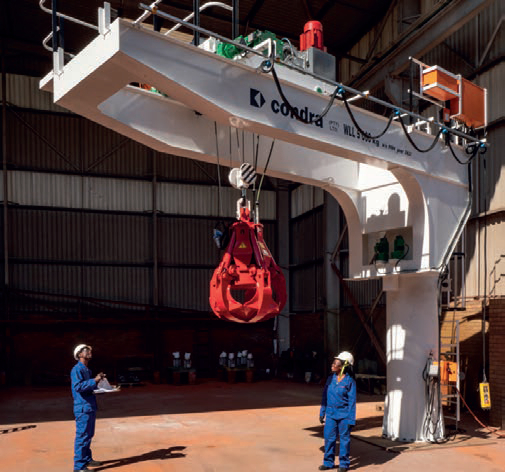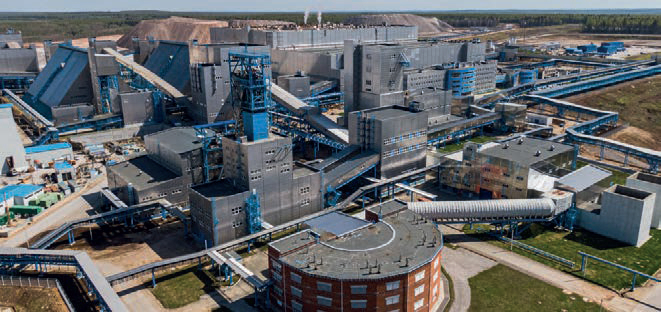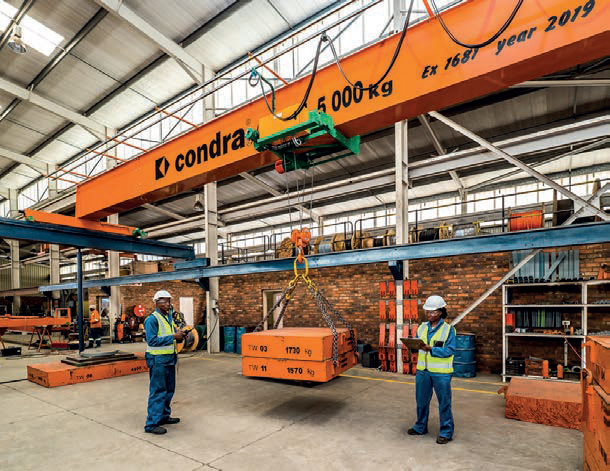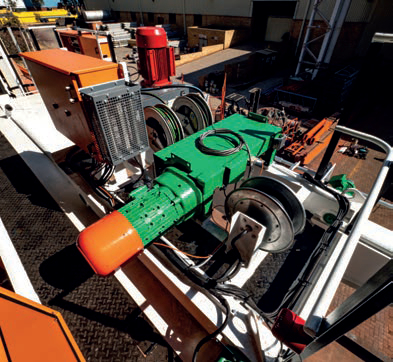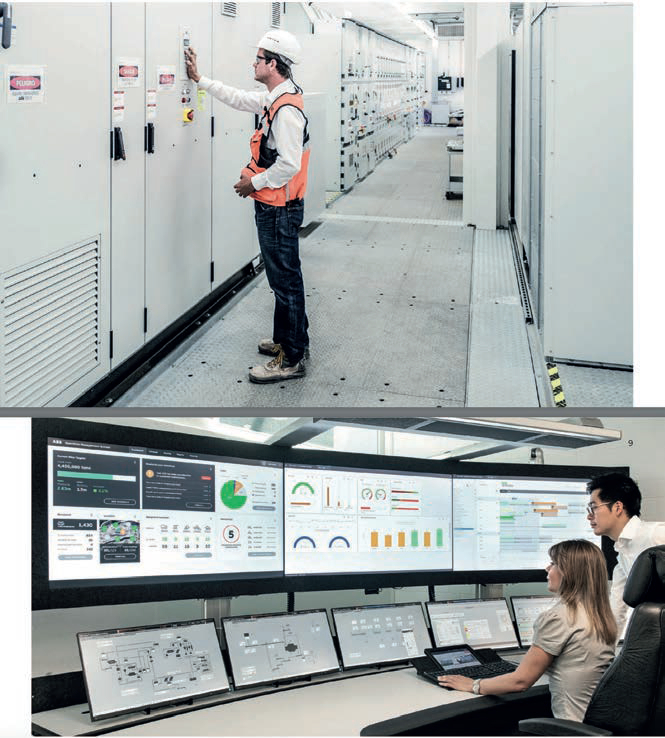Digging deep
16 December 2021The world’s mining companies are rushing to reduce their carbon footprint through electrification and a shift to renewable power but the technology for industrial-scale carbon capture and storage is still in its infancy. Jenny Eagle investigates.
Mine operators must improve safety, environmental and financial aspects while tackling mining that is often more remote, dangerous and hot, making staffing more problematical, according to Peter Harrop, chairman, IDTechEx and author of ‘Electric Vehicles and Robotics for Mining 2020-2030.’
He claims electric vehicles and increasingly unmanned mines tick all the boxes in addressing these challenges, from sea floor to mountain, deep mine and open pit work and how many mining vehicles are among the most power-hungry EVs (Electric Vehicles), yet they are located where pressure for zero-emission local electricity supply is strengthening.
Elsewhere, Liebherr launched its Zero Emission Program last month, to offer low carbon emission solutions for its trucks and excavators by 2022 and fossil fuel free solutions by 2030, to support customers on their path towards decarbonisation and has partnered with ABB and ENGIE as a result.
Liebherr Mining has clear targets and a roadmap to expand its current offering to achieve low carbon solutions in 2022, along with fossil fuel free solutions for the majority of applications by 2030.
‘The global mining industry has demonstrated its commitment to cut greenhouse gas (GHG) emissions in support of the Paris Agreement, with many major mining houses announcing decarbonisation targets over the past 18 months. This increased focus on GHG emission reduction has accelerated the implementation of Liebherr’s existing low carbon solutions and triggered future projects to offer completely fossil fuel free mining equipment options. Liebherr Mining’s strategy to reduce GHG emissions will mainly focus on the operational phase of their machinery, as studies showed that more than 90% of GHG emissions over the complete lifecycle of the equipment occurred during this phase,’ the company said in a statement.
KONECRANES AND LKAB
Konecranes says it is also working towards a more sustainable, decarbonized and circular future. It reported its Q3 Financial Results Interim Report (January-September 2021) claiming it signed the Science Based Targets Initiative (SBTi) commitment letter in late-2020 and is focusing on reducing its carbon footprint.
It said its January–September sales of its “eco portfolio”, comprising fully electrified and hybrid equipment, as well as modernizations and retrofits, totalled 49% of Konecranes’ sales (55% in fullyear 2020). For Service, the eco portfolio represented 15% of sales (16% in full-year 2020), for Industrial Equipment 100% (100% in full-year 2020) and for Port Solutions 41% (53% in full-year 2020). The relatively low eco portfolio share of Service is due to only modernizations and retrofits being included in the eco portfolio, although all maintenance work and spare parts aim at extending product lifecycle and increased resource-efficiency.
Konecranes won a multi-year service contract with international mining and minerals group LKAB earlier this year for the maintenance of some 1,600 assets across four sites in northern Sweden and the Arctic Circle.
LKAB’s mines in northern Sweden are remote and subject to harsh winter weather, with temperatures frequently below -20C. Inside its facilities, some of the equipment needing regular servicing sits more than a kilometer underground in hard-to-reach places, and massive industrial doors cannot fail given the stable temperatures needed to ensure the successful iron ore production process. Precise planning, fail-safe technology and safety are paramount.
“Konecranes was already our supplier in Malmberget and based on that work we agreed to expand the scope to cover the entire company, including our subsidiaries. The multi-year agreement gives us the opportunity with Konecranes to plan a common long-term maintenance approach for the future, and we look forward to starting these next steps,” says Johan Rotmalm, contract owner, LKAB.
Konecranes will service industrial doors and lifting equipment at LKAB’s sites in Kiruna and Svappavaara, above the Arctic Circle, as well as lifting equipment in Malmberget and Luleå. The contract also covers access to Konecranes’ digital tools for smarter service so LKAB can develop a maintenance plan that maximizes production uptime.
ABB ABILITY EMINE
ABB recently unveiled its ABB Ability eMine, a portfolio of solutions to accelerate the move towards a zero-carbon mine and is piloting the eMine FastCharge, charging system to interface with all makes of electric mining haul trucks.
eMine comprises a portfolio of electrification technologies which makes the all-electric mine possible from mine to port and is integrated with digital applications and services to monitor and optimize energy usage. It can electrify any mining equipment across hoisting, grinding, hauling and material handling.
“The global mining industry is undergoing one of the most significant and important transformations of our generation – and that is to become zero-carbon,” says Max Luedtke, global head of Mining, ABB. “ABB Ability eMine is an exciting milestone to help convert existing mining operations from fossil fuel energy to all-electric. Mines can become even more energy efficient with vastly reduced levels of CO2 emissions, while at the same time staying competitive and ensuring high productivity.”
Mehrzad Ashnagaran, global product line manager, Electrification and Composite Plant, ABB, adds it is extending its engineering capabilities and investment to electric transport, to meet growing demand. “Besides the environmental benefits, fuel price volatility, making electricity more cost competitive, and legislation are driving the move to electric-powered mines,” he says.
Earlier this year, ABB secured a contract for its Ability Asset Vista Condition Monitoring software to streamline maintenance, minimize costs and optimize capacity at Shanyang Coal Mine in Heyang near Weinan city, China.
The digital software has been installed at 18 sites worldwide since launching in 2015 and the commission at Shanyang Coal Mine is the first for ABB in China.
The coal mine produces more than three million tons of coal annually and its equipment includes a production hoist, two service hoists and one main ventilation system. The hoists are equipped with ABB brake systems installed by ABB China eight years ago.
The ABB software comprises a data acquisition system, five workstations, network devices and ABB Ability Asset Vista to monitor three hoists and the main ventilation system of the mine.
“This contract marks Asset Vista’s first application in China,” said Xin Wang, service manager, ABB Process Industries, North Asia and China. “With technical support from ABB Brazil’s Asset Vista team, including training and project experience sharing. The success of this project will play a key role in expanding our digital capabilities among other mining customers and industrial sectors in China with enquiries from new customers already coming in.”
According to Eduardo Ingegneri, global product manager, ABB Ability Asset Vista, it has seen an increase in customers understanding the benefits of condition monitoring and how it creates a larger geographical footprint across industries.
“The technology is not only scalable, but can be adapted to a range of scenarios to ensure the highest levels of asset health and to enable more predictable operations,” he added.
The ABB Ability Asset Vista for mining pulls together disparate data on the condition of equipment to provide a complete picture of asset health, helping to increase process efficiency and minimize maintenance. It predicts potential problems and detects root cause, considerably reducing downtime. This improves equipment utilization and maximizes productivity, which ultimately enables mine operators to reduce costs.
It also provides full-time online monitoring capabilities, including functions such as intelligent algorithms on evaluation system operation and device condition change, troubleshooting and maintenance support, among others.
“We have benefitted from ABB’s expertise in hoists and brake systems previously and know that ABB also has a strong track record in building unified IT frameworks,” said Chongyun Zhang of Shaanxi Chenghe Shanyang Coal Mine Co. “ABB’s local technical competence and the adaptation and scalability of ABB Ability Asset Vista were additional key factors in awarding this contract.”
CONDRA MINING PROJECTS
Condra recently designed and manufactured a large jib crane for bulk recovery underground of ore spilled at an unnamed mine. Principal co-suppliers for Condra’s ore recovery crane were Rec-O-Quip, which designed the overall multiple-machine concept process, and MMH Recycling Systems which supplied the five-ton hydraulic grab.
The Condra jib crane has been designed and built to withstand a harsh underground working environment with minimal maintenance. It comprises a pillar-supported double-girder beam topped by the crab-mounted hoist, an arrangement that maximises the grab’s lifting height and optimises productivity in the execution of a repetitive but complex lifting task within the spilled ore recovery process.
The 5 ton crane has a lifting height of 9 metres, a slewing radius of 5 metres, and is equipped with an orange-peel grab and electromagnet combination that allows bulk ore to be gathered, lifted and positioned while simultaneously separating out the iron ore within it by means of the electromagnet.
“The jib crane market is very competitive at its entry level or small-machine end, and we do not actively compete in that segment. But as crane size and complexity increases, Condra becomes difficult to beat in terms of engineering and design expertise,” said Marc Kleiner MD, Condra. “We have worked hard over many years to achieve an ability to align with both end-users and multiple third-party suppliers to deliver the required solution.”
After installation and commissioning at surface level for trials, the crane will play a key role in a prototype ore recovery process. Permanent installation underground will take place after six months of tests.
The mine’s surface-level prototype solution comprises five different types of machines working together. Ore spilled along the conveyor lines will first be recovered by small articulated loaders which will place it on dump trucks for depositing in a purpose-built pit. The jib crane will then retrieve the ore from the pit by means of a combined grabbing, magnetising, lifting, slewing and travel functionality, depositing the ore into a feed hopper from where a secondary conveyor belt will transport it to re-join the main ore stream on its way to the crushing plant.
The crab itself is jam-packed with equipment, holding not only the 5-ton variable-speed-drive hoist, but also the hydraulic power pack, two hydraulic hose reels serving the opening and closing functions of the orange-peel grab, and the cable-reeling drum serving the electromagnet.
Slewing action is delivered by power from three swivel drives and limited by rotary limit switches defining and limiting travel extremities. The crane’s lift, swivel and crab movements, and all hydraulic grab and release functions, can be operated by either remote control or back-up pendant.
Cape Town lifting equipment company BB Cranes (part of Condra) has secured an order for its 14th overhead crane to be installed at Gamsberg Zinc Mine in Northern Cape Province, South Africa.
Placed by Mota-Engil, the order is associated with a contract signed between this Portuguese mining and construction group and Black Mountain Mining for further drilling, excavation and transportation work at Gamsberg. Black Mountain Mining is the mine owner.
The 13th cranes already installed were designed and manufactured in Johannesburg by BB’s parent company Condra. They were installed by BB Cranes. The first 11 were delivered to the mine during its initial development in 2017, and a further two units were commissioned as a separate order last year.
There are currently two 10-ton double-girder overhead cranes in service, one 40/8-ton crane also of double-girder configuration, a number of 5-ton single-girder machines and various hoists and lifting beams.
The latest crane for Gamsberg Zinc will be a 20 ton, double-girder electric overhead travelling crane once again of Condra design, but this time manufactured by BB Cranes at its Cape Town factory. It spans 18,2-metres and can deliver a 12-metre lifting height over a long-travel distance of 40 metres. The crane will be used for maintenance and repair duties in Mota-Engil’s workshops.
SIEMAG TECBERG
Siemag Tecberg recently won a contract to supply a hoisting system for a new shaft at EuroChem’s Usolskiy potash complex in Perm, Russia. The complex is built around Verkhnekamskoe, one of the world‘s largest potash deposits.
One expansion phase of the Usolskiy complex includes the already started construction of a third production shaft (Usolskiy Shaft No. 3) with a depth of 511.7m as well as a further treatment system. The present agreement requires Siemag Tecberg to undertake the engineering, production, delivery, supervision of assembly and commissioning of the shaft hoisting systems for raw material extraction; double-drum winding machine, diameter 6 m, for skip extraction with a drive capacity of 4.55 MW designed for an annual hoisting capacity of up to 4.2 Mt. Sliding bearings with bearing lubrication, a type SB1 hydraulic braking system, rope sheaves for deflection, as well as automation and signalling equipment.
In the recently expanded Tecberg park, Siemag Tecberg is carrying out all the necessary work to ensure efficient assembly/installation and final commissioning onsite. This includes complete functional assembly/installation of the equipment together with extensive system tests on drive test stands as well as pre-commissioning with all pre-settings.
After commissioning of the systems, the team at Usolskiy will be supported onsite with any spare parts, maintenance of the equipment and storage facility at Berezniki in the Perm region.
